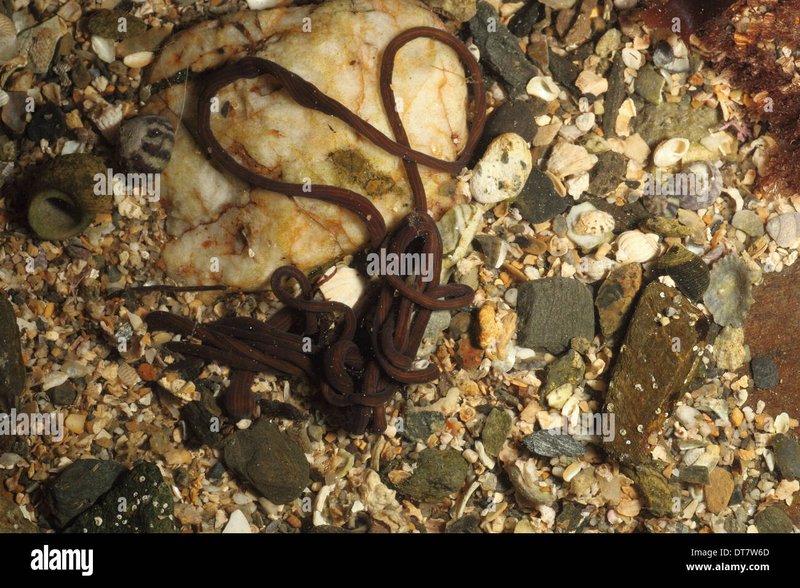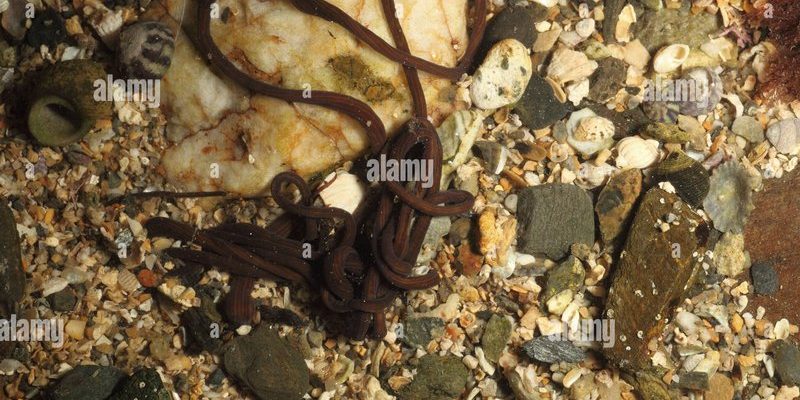
Bootlace worms have some intriguing behaviors as the tide ebbs and flows. Imagine a bustling city preparing for a daily routine. As the tide lowers, these worms adapt, hiding away in crevices or burrowing into the sand. Their survival strategies during low tide are as compelling as their remarkable lengths. Let’s explore how they manage to thrive in such a changing environment.
What Are Bootlace Worms?
Bootlace worms are fascinating creatures that belong to a group known as ribbon worms. They’re found in various marine environments, from shallow waters to deeper ocean floors. Their name comes from their thin, elongated shape, resembling a bootlace. These worms are not only long but also come in various colors, including bright yellows, greens, and reds. It’s a stunning visual that can catch anyone’s eye!
You might find it interesting that bootlace worms can regenerate. If they lose a part of their body, they can often grow it back. This ability makes them resilient and gives them an edge in their often-hostile environments. However, they’re not just resilient; they’re also fascinating predators. Using a unique feeding strategy involving a sticky proboscis, they can capture prey like small fish and crustaceans. Here’s the thing: when the tide goes out, their feeding habits can shift dramatically.
How Do Bootlace Worms Survive Low Tide?
So, you might be wondering what bootlace worms do when the tide goes out. It’s a valid question! As water levels drop, these worms must take action to avoid desiccation or drying out. They have a few tricks up their sleeves.
First, many bootlace worms tend to bury themselves in the sand or mud. This behavior helps them retain moisture and stay hidden from predators. It’s like finding a cozy spot to curl up in during a chilly night! They can also retract their bodies into crevices of rocks and other surfaces. This retreat helps them stay moist and protected, effectively making it harder for both predators and the sun’s drying rays to reach them.
Moreover, their body composition plays a crucial role in their survival. Bootlace worms have a high water content, which means they need to manage their hydration levels carefully during low tide. If they dry out too much, it could be detrimental. Thus, finding a hideout becomes essential for their survival.
Bootlace Worms and Their Habitat
Bootlace worms can often be found in rocky coastal areas, tidal pools, and marshy environments. These habitats provide the right conditions for them to thrive. The combination of sand, mud, and rocky crevices allows them to hide and move freely.
You might see them during your next beach stroll, especially if you peek into tide pools when the tide is low. That’s when various marine life, including other creatures like sea anemones and crabs, are more visible. Bootlace worms, however, are less likely to be out in the open. They prefer the safety of their burrows where they can watch the world go by without fear.
Another essential factor is the availability of food. During low tide, bootlace worms rely heavily on what’s washed up or available. The nutritious detritus left behind provides them with sustenance. It’s a delicate balance of food availability and environmental protection.
Unique Characteristics of Bootlace Worms
The bootlace worm’s long, ribbon-like structure isn’t the only thing that makes it unique. One particularly intriguing feature is its ability to produce a strong secretion. This secretion can act as a defense mechanism, deterring potential predators. When threatened, a bootlace worm can release this slime, making it hard for predators to grab them. You could say they have their own built-in security system!
Additionally, they can reproduce in various ways. Sometimes, they engage in both sexual and asexual reproduction, which is quite rare in the animal kingdom. This versatility helps ensure the species’ survival, especially when conditions fluctuate in their coastal habitats.
Another noteworthy characteristic is their impressive length. Bootlace worms aren’t just long; they can sometimes reach incredible lengths of up to 55 meters! Think about that the next time you see a piece of string—it’s a reminder of how wild and amazing nature can be.
Research on Bootlace Worms
Scientists are increasingly studying bootlace worms to unravel the mysteries of their biology and behavior. Understanding how these creatures respond to changing environmental conditions, like climate change, is critical. Researchers look at their habitat preferences, feeding behaviors, and reproductive strategies to gather insights about marine ecosystems.
Their ability to adapt to low-tide conditions is particularly fascinating. By studying these worms, scientists can learn more about resilience in marine life. This knowledge is important, especially as human activity continues to impact coastal areas. Protecting habitats and understanding the intricate balance of life within these environments is vital for future conservation efforts.
Here’s the thing: by observing bootlace worms and their behavior, we gain broader insights into marine life’s complexity. Every little creature plays a role in the ecosystem, and these worms are no exception.
Bootlace worms are remarkable creatures that showcase the wonders of marine life, especially during low tide. Their adaptations for survival, from hiding in sand and crevices to unique reproductive strategies, highlight their resilience. As we uncover more about these fascinating organisms, we come to appreciate the delicate dance of life that plays out in our coastal ecosystems.
Next time you’re by the shore and the tide recedes, take a moment to think about what’s happening below the surface. While you may not see the bootlace worms directly, knowing they’re there adds another layer of wonder to your beach adventures. Enjoy the exploration and all the surprises nature has to offer!

